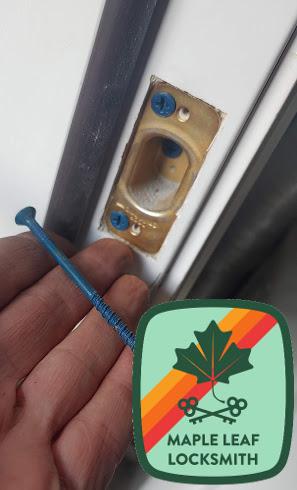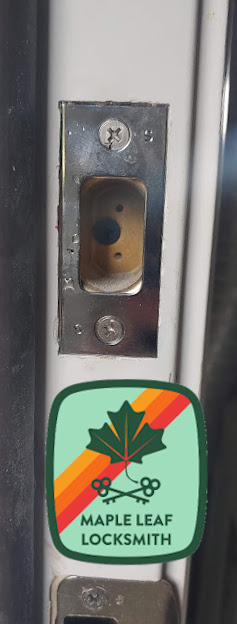When considering the security of a building I think it is important to consider what entrances a criminal would attempt to use first. The criminal wants low visibility and the path of least resistance.
This usually means the front door will be left alone because it is usually visible from other peoples’ houses and the street. A far more attractive entrance is to the side or rear of the building. Why is this?
The petty criminal wants to avoid any interaction with the occupants of the building. They would like to enter without alerting anybody inside or outside. The basement is the ideal entry point for most criminals because people are usually in the upper floors of a building. In a house, the basement is usually stocked with goodies that can be pawned for quick drug money. Power tools, sports equipment, audio and visual equipment are all typical in people’s basements.
Despite being the most likely entry point for criminals, basement doors are frequently the least secure. Let’s consider why:
- /The basement door is less visible and used less often so people are less concerned with replacing it
- Since many haven’t been replaced for decades they are frequently an older style of door featuring thin panels in the middle
- If they have glass it is often single pane glass, Modern doors generally have double pane glass. It is harder to break through and also insulates the building better. Thieves would rather break single pane glass because it takes only one hit so it is quieter.
- Old doors are often thin 2 and 3/8″ doors. It is harder to kick down modern exterior doors that are solid wood or hollow steel and 2 and 3/4″ thick. Not all doors are created equally, many 2,3/4″ doors are plywood.
- Basement doors are often framed into the foundation and door installers are typically too lazy to install the strike plates into the concrete behind the door frame. It is a lot of work to drill through concrete even with a hammer drill and a concrete bit, especially if there is a big rock where you are attempting to drill a hole!
You may be wondering, “Maple Leaf Locksmith, what can I do to make my cheap old basement door more secure?”
Glad you asked! The rich man’s solution is to call somebody who installs doors and ask for a solid wood exterior door, a hollow metal door, or a fiberglass door and fiberglass frame. Ask that the frame be attached to the concrete in multiple places with concrete fasteners or glue.
At the time of this writing (2020 Coronavirus outbreak) many people find themselves without cash lying around. This is all the more reason to secure your basement door: desperation is going up as the economy goes down. What are the inexpensive but effective ways to secure such a door?
The number one thing to do is to attach a piece of 3/4″ plywood to the door. You would attach the plywood to the inside if the door swings in or the outside if it swings out. You would want CDX and you would want to seal it with paint.
To attach the plywood to the door you would get screws that are slightly shorter than the thickness of the plywood and the door combined. The typical situation would be a 2,3/8″ door and 3/4″ plywood bringing us to 3 and 1/8″. 3″ long screws would not poke through if they aren’t countersunk but just screwed flush. You would drill pilot holes and screw the wood in from the inside of the door so somebody can’t simply unscrew the plywood. To ensure you don’t drill the pilot hole all the way through, wrap a piece of tape around the drill bit at 2 and 7/8″ and don’t drill past the tape.
For an even more secure solution but not as attractive, you can through bolt the plywood using carriage bolts and nuts. The head of the carriage bolt would be on the outside of the door. I’d do one every ten inches all the way around the door.
Either solution would probably cost you $75 in parts including plywood and fasteners.
Another solution if you just want to rectify the single pane glass would be attaching a piece of polycarbonate over the glass. I’d use carriage bolts for this. You have to get a piece of polycarbonate that is larger than the glass because when you drill through the door you don’t want to hit the glass. Bank on at least an inch away from the glass on all sides, or 2″ wider and 2″ taller than the glass itself.
Once the door is worthwhile it is time to address the strike plate. To determine if your strike needs attention, unscrew the strike plate from the door frame. The strike plate is the metal object that the deadbolt’s bolt goes into when the door is closed and the bolt is locked into place. If you don’t have one you’re a sitting duck!
If the screws are half an inch long the strike is mostly decorative. The screws should be two or three inches. They should go into the stud behind the doorframe or if there is concrete they should go into that.
To screw into concrete you need special screws and you need a hole longer than the screw and a very specific diameter. The head of the screw must be the same size as the screws that came with your strike.

The deadbolt has a weak d strike for a doorknob. 
We replace with a cup strike with concrete screws. 
Cover the cup strike with the decorative strike that comes with the deadbolt.
